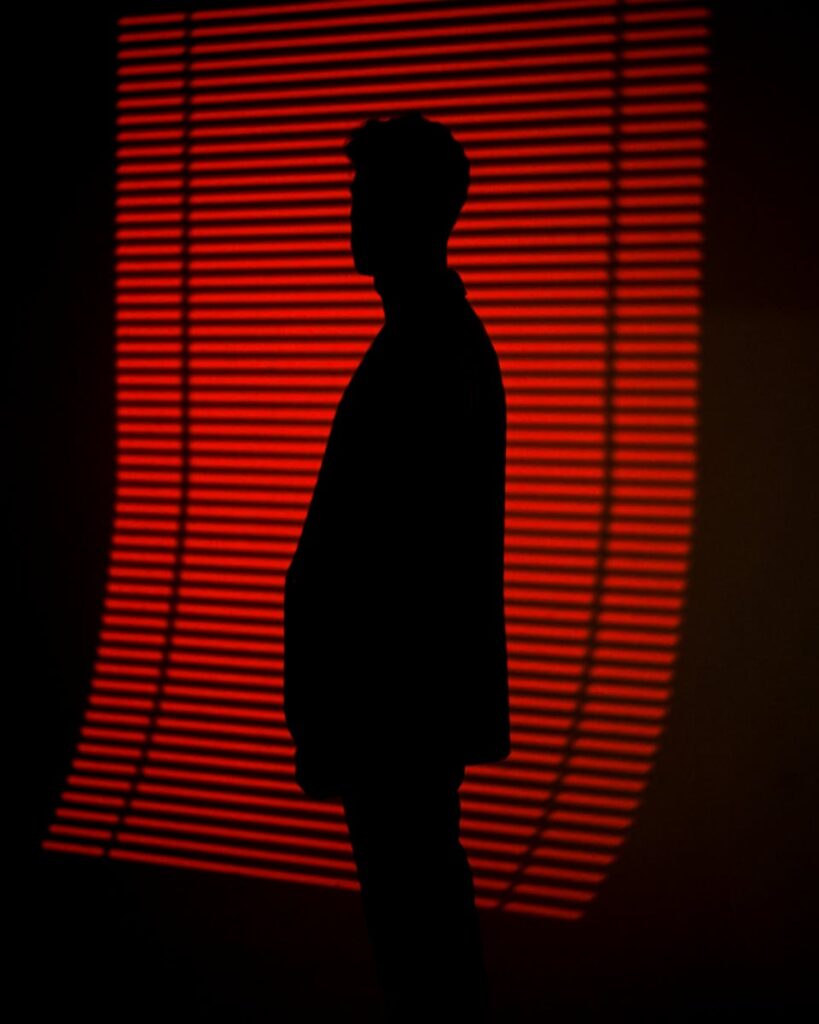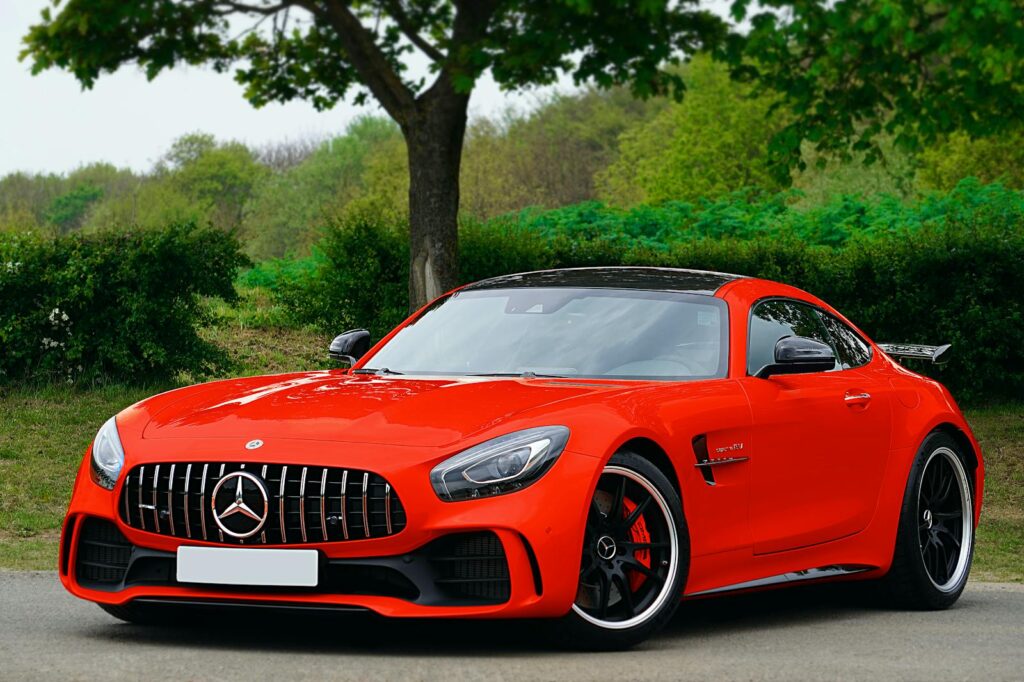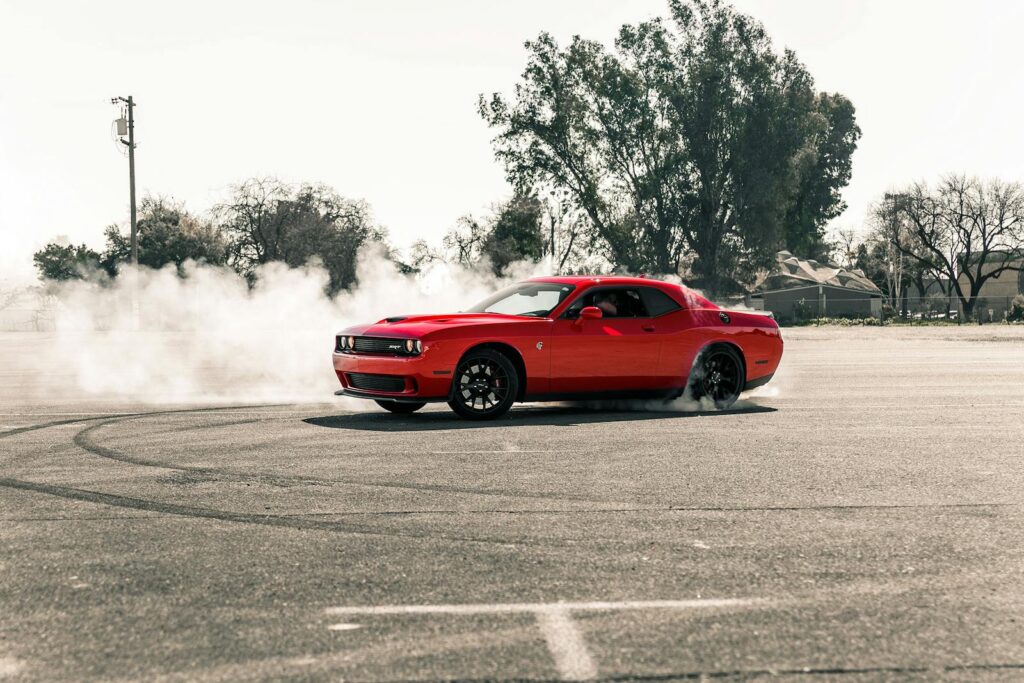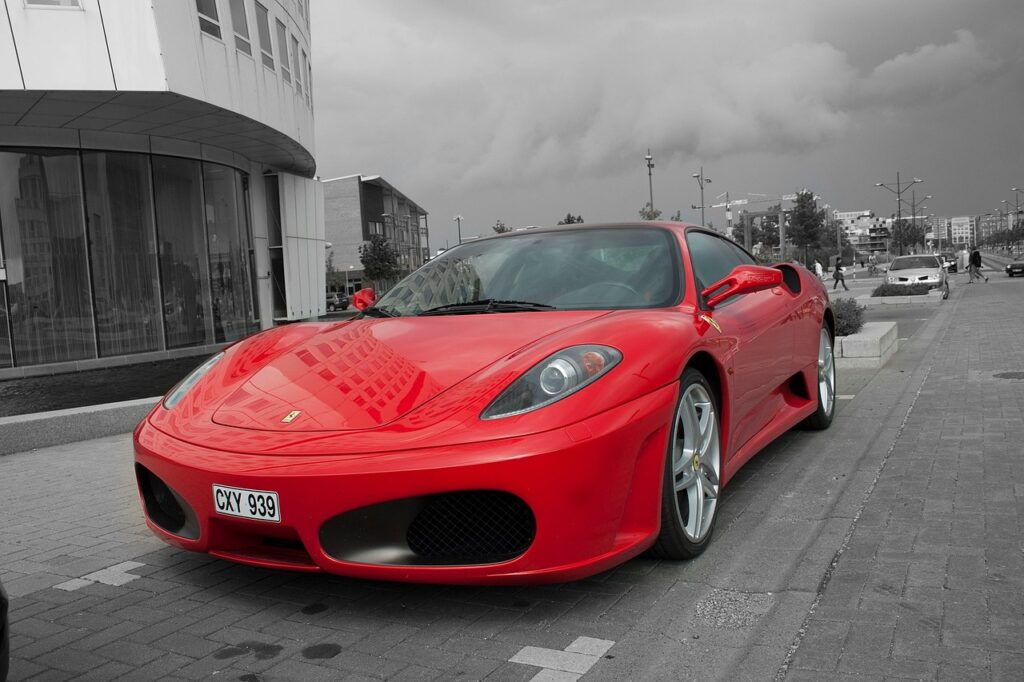
In the vibrant landscape of American automotive culture, one color consistently captures the eye and ignites the imagination: red. It’s more than just a shade on the spectrum; red is a statement, a feeling, and a powerful psychological trigger. This striking hue often dominates the roads, turning heads and reflecting a deeper connection between color and consumer choice.
From the sleekest sports cars to the most robust SUVs, red vehicles command a presence that few other colors can match. This isn’t merely a coincidence or a passing trend. The enduring appeal of red in the U.S. auto market is deeply rooted in human psychology, cultural associations, and its potent ability to convey a myriad of messages without uttering a single word. Understanding this phenomenon requires a journey into the very essence of what red means to us, both consciously and subconsciously.
This in-depth exploration will unpack the multifaceted reasons behind red’s reign, revealing how its inherent characteristics resonate with drivers and influence purchasing decisions across the nation. We will delve into twelve key aspects, beginning with its fundamental emotional resonance and its profound impact on perceptions of power, passion, confidence, attraction, and attention—all crucial elements in the allure of a red car.

1. **Red’s Fundamental Emotional Resonance**Red is not just any color; it is a primary hue that possesses an undeniable, primal pull on human emotions and perceptions. It is inextricably linked with a vast array of strong human feelings, from the intense warmth of love and desire to the fiery depths of anger and aggression. This dual nature makes red a truly fascinating and impactful color, setting it apart in its ability to evoke such a broad spectrum of responses.
Indeed, red has always been regarded as a head-turner, thanks to its warm, bright, and vibrant hues. This inherent visibility and captivating quality ensure that anything colored red immediately grabs attention. For a product like an automobile, which is often an extension of one’s personality and an expression of status, this immediate recognition is a powerful asset.
Studies consistently show that red has both significant physiological and psychological impacts on people. Its vibrant presence often gives us more energy and motivates us to take action. This innate ability to stir the human spirit makes red a potent force, influencing mood, energy levels, and even our capacity for decision-making in ways we might not fully recognize.
Historically, red holds a special place, being the first color that humans mastered, fabricated, and reproduced into various shades. It was a predominant choice for prehistoric artists and later carried profound religious significance throughout the Middle Ages, representing elements like the blood of Christ and the fires of hell. Its deep historical roots further cement its powerful, almost archetypal, presence in the human psyche.
By the 19th century, red evolved to symbolize major political and social movements, such as socialism, and artists began employing it to create specific emotions rather than merely imitating nature. This long and varied history underscores red’s deeply ingrained cultural and psychological importance, making its impact on consumer choices, particularly for high-value items like cars, all the more profound.
2. **The Unmistakable Aura of Power and Dominance**Among all colors, red stands out for its unmatched capacity to provoke the most potent emotions, fostering feelings of both healthy ambition and, at times, unhealthy competition. This powerful influence allows red to significantly boost people’s self-esteem, making them feel more dominant and in control of their environment. It’s a color that inherently signals strength and authority.
Choosing a red vehicle is often an unconscious declaration of one’s desire to stand out from the crowd. It influences the way others perceive the driver, projecting an image of confidence and assertiveness. This bold choice ensures that the vehicle, and by extension its owner, is noticed and remembered, leaving a strong impression on onlookers.
The automotive world provides a perfect illustration of this principle, where the association of red with power is almost universal. As the context states, “the fastest and most luxurious cars in the world are most often painted in red.” This isn’t accidental; it’s a deliberate alignment of a vehicle’s performance and prestige with the psychological power that red inherently conveys.
Owning a red car, much like receiving “red carpet treatment” or wearing red clothing, can imbue an individual with a heightened sense of power and significance compared to those who opt for more subdued shades. This visual cue acts as a non-verbal affirmation of status and influence, resonating deeply with many consumers.
Red also has a profound psychological impact on perceptions of power, status, and dominance. Exposure to red makes people feel more influential and in control of their surroundings. Thus, driving a red car can reinforce a sense of authority and command respect, making it an appealing choice for individuals who value these attributes.
Read more about: 14 Untamed 1970 Muscle Cars That Still Roar and Resonate Today: A MotorTrend Deep Dive

3. **Igniting Passion and Driving Enthusiasm**Red is intrinsically linked to passion, serving as a powerful catalyst for motivation and intense interest. It provides individuals with the drive to excel and do their utmost in pursuing endeavors they genuinely love. This translates seamlessly into the experience of driving, making a red car a symbol of a passionate approach to life and the open road.
The color red excites our emotions, creating a surge of enthusiasm that propels us to exert extra effort, whether it’s to finish a demanding task or achieve a specific goal. For car owners, this means that a red vehicle often represents more than just transportation; it symbolizes an active, engaged, and spirited lifestyle, where every journey is approached with vigor.
This connection to passion explains why drivers drawn to red cars often view their vehicles not just as utilitarian objects, but as expressions of their own intense interests and zest for life. The car becomes an extension of their fervent personality, reflecting a commitment to living life fully and dynamically. It’s about more than just getting from point A to point B; it’s about the journey itself.
The vibrant hue of red, as studies suggest, effectively energizes us, providing the mental and emotional impetus to take action. This inherent stimulating quality means that a red car can enhance the feeling of excitement and engagement every time one gets behind the wheel, making even routine drives feel more exhilarating and alive.
Choosing red for an automobile is, therefore, an emotional decision rooted in a desire for a lively and spirited experience. It’s about embracing the intense interest and enthusiasm that red evokes, transforming the act of driving into a passionate pursuit rather than a mundane chore. This emotional charge is a significant contributor to its popularity.
Read more about: The Next Meme Stock: How Savvy Investors Can Spot the Viral Winners Before They Explode
4. **A Statement of Confidence on Four Wheels**Red stands as an unequivocal symbol of confidence, embodying the state of unwavering belief in one’s own abilities, qualities, and judgment. When an individual selects a red car, they are making a clear, bold statement about their self-assuredness. It’s a declaration of inner strength that resonates with onlookers and solidifies personal conviction.
Just as wearing a red dress, a striking red coat, or a dash of red lipstick projects an image of someone ready to tackle the world, driving a red car conveys a similar message. It signifies a readiness to embrace challenges head-on and to make a noticeable impact wherever one goes. This choice reflects a mindset geared towards proactive engagement and unmistakable presence.
Red plays an essential role in allowing individuals to visibly express what they are capable of achieving. It’s a color that leaves no room for doubt about the driver’s conviction and self-belief. This outward display of confidence can be highly attractive, drawing admiration and respect from others on the road and beyond.
This choice in automotive color isn’t merely about aesthetics; it’s a profound psychological act. A red car allows the driver to communicate their resolute and optimistic outlook without uttering a single word. It’s a non-verbal affirmation of self-worth and a powerful testament to their belief in their own unique journey and destination.
Furthermore, those with a “red personality type” are often described as confident, optimistic, and firm, unafraid to stand up for themselves. This direct correlation suggests that red cars naturally appeal to individuals who possess these very traits, seeking a vehicle that mirrors their inherent belief in their capabilities and their desire to make a difference.
Read more about: Boomer Dreams, Millennial Doubts: Why These 14 Classic Cars Spark a Generational Divide

5. **Enhancing Attraction and Visual Appeal**Beyond its associations with power and confidence, red also possesses profound psychological links to sexuality, lust, and attraction between genders. This makes it an incredibly potent color for anything intended to be alluring or desirable. For an automobile, this translates into an enhanced perceived attractiveness, making a red car a truly captivating sight.
Observing the color red unconsciously primes the human brain for romance and desire. This subtle yet powerful effect means that a red car is not just seen; it is felt. It evokes a deeper, more instinctive response from observers, making the vehicle, and often its driver, appear more appealing and intriguing. It’s a color that speaks directly to our primal instincts.
Studies have even suggested that red enhances perceived attractiveness levels, not just for individuals wearing it but for the objects associated with them. This psychological phenomenon ensures that a red car immediately communicates “strong feelings of attraction,” significantly boosting its desirability in the eyes of potential buyers and general onlookers alike.
The choice of a red vehicle can thus be seen as an intentional or subconscious effort to amplify one’s charisma and appeal. It’s a statement that goes beyond mere taste, tapping into fundamental human desires for connection and admiration. This inherent allure makes red a formidable force in the automotive marketplace, consistently drawing appreciative glances.
Moreover, since red is universally associated with romance, it is the chosen color for romantic gifts such as red roses and red balloons. This cultural conditioning further strengthens its ties to passion and desirability, imbuing a red car with a symbolic weight that transcends its mechanical function and elevates it to an object of desire.
Read more about: Devon: Unveiling the Enduring Spirit of England’s Southwestern County
6. **The Magnetic Pull of Attention-Grabbing Hues**One of red’s most undeniable characteristics is its innate ability to instinctively capture people’s attention. Its arousing psychological properties ensure that it stands out in almost any environment, immediately focusing mental resources on whatever object it adorns. This makes red an incredibly effective color for anything that needs to be noticed.
In the context of automotive sales, this high visibility is a monumental advantage. A red car is virtually impossible to ignore on the road or in a showroom. It automatically draws the eye, ensuring that the vehicle receives the immediate notice it deserves, whether it’s speeding past or parked conspicuously.
The context explicitly states that “red is regarded as a head-turner due to its warm, bright hues.” This intrinsic quality ensures that a red vehicle does more than just transport; it announces its presence. This can be a significant draw for consumers who wish their vehicle to make an impact and distinguish itself from the sea of more muted colors.
Furthermore, red is effectively leveraged in branding and marketing because it “draws attention and leaves a memorable impact.” For car manufacturers and dealerships, a red model on display can significantly increase foot traffic and memorability, helping to solidify the brand’s presence in the consumer’s mind and stimulate purchasing intent.
This psychological property of red, its capacity to alert and warn, also makes it highly effective for highlighting critical information. While this might typically apply to warning signs, its basic function of demanding focus translates directly to a car that demands attention, making it a compelling choice for drivers who want their vehicle to have an undeniable presence.
Continuing our deep dive into the captivating allure of red, we now shift our focus to how this dynamic color interacts with personal identities, its strategic deployment in the automotive industry, and the broader cultural tapestry that solidifies its enduring presence. The choice of a red vehicle is often an extension of one’s inner drive and outward persona, a testament to a carefully crafted image that speaks volumes without a single spoken word.

7. **Embracing the ‘Red Personality Type’**The magnetic appeal of red cars often resonates deeply with individuals who embody what is known as the ‘red personality type.’ These are typically extroverted and outgoing individuals who possess a vibrant zest for life, thriving on social interaction and embracing experiences to the fullest. Their innate energy and enthusiasm find a perfect mirror in the bold statement a red car makes, creating a seamless alignment between vehicle and character.
Furthermore, those with a dominant red personality are characterized by remarkable confidence and an unshakeable optimism. They are firm in their convictions, unafraid to assert themselves or defend their beliefs, and not easily swayed by criticism. A red car, in this context, becomes a visible declaration of this self-assuredness, signaling a driver who is comfortable in their own skin and ready to navigate the world with unwavering self-belief.
Passion and drive are also hallmarks of this personality type. They approach their interests with intense enthusiasm, motivating them to pursue goals relentlessly and achieve success. For such individuals, a red vehicle is not merely transportation; it’s a symbol of their fervent commitment to living life actively and engaging fully with every journey, turning even a simple drive into an energetic pursuit.
This adventurous and courageous spirit further connects with the choice of a red automobile. Red personality types are eager to embrace new challenges and stand brave in the face of adversity, inspiring those around them. Their charismatic and vivacious nature ensures they leave a memorable impression, and a striking red car amplifies this commanding presence, making them natural leaders on the road and in life.
Read more about: 12 Cars That Went From “Wow” to “Yikes”—Cool to Cringe in No Time

8. **Red in Automotive Branding and Marketing**The strategic deployment of red in automotive branding and marketing is a testament to its powerful psychological influence. Red’s inherent ability to draw attention and leave a memorable impact makes it an invaluable asset for manufacturers seeking to differentiate their vehicles in a crowded market. However, its effectiveness hinges on careful execution, as the specific shade and context of its use significantly alter its perceived meaning.
Vibrant reds, such as crimson and scarlet, are particularly effective for conveying youthful energy, confidence, and a modern aesthetic. These bright hues are often employed by brands in the entertainment, sports, and technology sectors, seeking an innovative and dynamic image. In the automotive world, these shades align well with performance-oriented models or vehicles targeting a younger, more adventurous demographic, instantly grabbing focus and communicating excitement.
Conversely, deeper and darker reds, including burgundy, maroon, and oxblood, evoke a sense of sophistication, luxury, and timeless elegance. These richer tones are favored by premium brands, high-end retail, and fine dining establishments to project an image of refinement and class. Applied to automobiles, these sophisticated reds elevate a vehicle’s perceived value and prestige, appealing to discerning buyers who seek understated luxury and classic yet contemporary style.
Effective branding with red also requires restraint and consistency. While red provides powerful contrast with white space and black text, making it ideal for impactful logos and headlines, overuse can lead to visual fatigue or an aggressive impression. Automotive designers and marketers meticulously balance red with neutral or muted colors to prevent overwhelming the customer, ensuring that red serves as a powerful accent rather than a dominant, fatiguing presence.
Read more about: Seriously, What Were We Thinking? 15 Cars That Went From Peak Cool To Total Cringe

9. **Historical Roots and Enduring Significance**The enduring dominance of red in the American auto market is not merely a modern phenomenon; it is deeply intertwined with its profound historical roots, which have cemented its archetypal presence in the human psyche. Red holds a unique place in human history as the first color that humans successfully mastered, fabricated, and reproduced into various shades, a testament to its primal importance and early recognition.
Indeed, its historical significance stretches back to the prehistoric period, where it was one of the earliest colors utilized by artists. This ancient connection suggests an almost inherent understanding of red’s visual power and symbolic weight, laying the groundwork for its subsequent cultural omnipresence across civilizations and eras. From the dawn of human creativity, red has captured imagination.
Throughout the Middle Ages, red transcended mere aesthetic value to acquire deep religious significance. It became the color associated with profound spiritual concepts, symbolizing elements like the blood of Christ and the fires of hell. This powerful association imbued red with a sacred and often fearsome aura, making it a color of immense reverence and emotional depth.
Further solidifying its cultural impact, the Renaissance period saw artists strategically employing red to draw the viewer’s attention to the most influential figures within their paintings. This deliberate use highlights red’s inherent ability to command focus and signify importance, an artistic technique that foreshadows its modern application in branding and design to highlight key elements, including a vehicle’s presence.
By the 19th century, red had evolved to symbolize new political and social movements, notably socialism, and artists began to use it more consciously to create specific emotions rather than just imitating nature. This long and varied history, from primal art to religious symbolism and political ideologies, underscores red’s deeply ingrained cultural and psychological importance, making its impact on consumer choices, particularly for high-value items like cars, profoundly robust and enduring.
Product on Amazon: 2PCS Fishing Lures Featuring Slant Slicing Fisheye Lights for Enhanced Fish Attraction (color 1)
Brand: AugustknowU
Binding: Kitchen Product Group: Home Improvement
Price: 10.87 USD
Features:
1. [TWO LURES INCLUDED] Enjoy a complete fishing solution with our 2PCS slant slicing fisheye lights (9g and 13g), perfect for different fishing conditions.
2. [AUTOMATIC LIGHTING FUNCTION] Activate the lure’s LED light when it touches water, drawing in fish while conserving battery life by turning off when dry.
3. [NIGHT FISHING ENHANCEMENT] The alternating colors of the three lights increase visibility and attract more fish during nighttime outings.
4. [ WATERPROOF CONSTRUCTION] Designed with a waterproof closed structure, these lights are built to withstand harsh conditions while maintaining optimal functionality.
5. [VISUAL APPEAL FOR FISH] The striking metal glitter design not only catches the eye of potential catches but also enhances your fishing gear’s aesthetic appeal.
Shopping on Amazon >>
Read more about: 12 Classic Boomer Cars Millennials Avoid: The Hidden Factors Behind Younger Generations’ Disinterest

10. **Red’s Role in Performance and Risk-Taking Perception**Beyond its overt emotional appeals, red also plays a subtle yet significant role in influencing perceptions of performance and encouraging risk-taking behavior, factors that are particularly relevant in the dynamic automotive sector. Cognitively, research suggests that red can improve performance on detail-oriented tasks. While this might typically apply to mental challenges, the subtle psychological boost could contribute to a driver’s perceived alertness and focus when behind the wheel of a red car.
However, red’s cognitive influence is complex; it can also undermine higher-level thinking due to added anxiety and mental strain. Yet, in the context of driving, this inherent stimulating quality often translates into a sense of heightened awareness and readiness for action. It’s an energetic color that pushes boundaries, potentially influencing a driver’s mindset towards a more engaged and active driving experience.
More compellingly for automotive appeal, red inherently elicits sensations of thrill and adventure. This psychological connection promotes daring behavior, signaling excitement and a readiness to embrace challenges. For many car buyers, especially those drawn to sports cars or high-performance vehicles, choosing red is a subconscious endorsement of this adventurous spirit, a desire for a vehicle that embodies excitement and the thrill of the open road.
The stimulating nature of red is psychologically associated with impulsiveness and urgency, motivating rapid, reactive behavior rather than cautious consideration. While this could have negative connotations, it can also be interpreted as a desire for immediate gratification and a dynamic, unhesitating approach to life. A red car, in this light, appeals to those who live in the moment and seek a visceral, exhilarating connection with their driving experience.
-8119.jpg)
11. **Red’s Dual Nature: Aggression and Warning**The striking presence of red is not solely associated with positive attributes; it also carries a powerful dual nature, linked to aggression and acting as an unmistakable warning signal. This multifaceted psychological profile contributes to its robust impact in the automotive market, appealing to diverse motivations and perceptions. Red, while often linked to passion, can also heighten tendencies towards aggression and confrontational impulses.
Indeed, red has a strong psychological relationship with anger and rage, capable of eliciting unreasonable, heated reactions. Culturally, people often get “red in the face” when angry, further cementing this association with intensity and sometimes even violence, as it resembles the color of human blood. This potent, sometimes intimidating, aspect of red means a red car possesses an inherent assertiveness that demands attention and respect.
Due to its exceptionally high visibility and arousing psychological properties, red is universally employed in warning signs. It quickly attracts people’s attention to potential danger, serving as an effective alert mechanism. In the automotive context, this translates into a car that is almost impossible to ignore, providing a visual warning to others of its presence and movement, whether intentional or not.
This inherent ability to “alert and warn” can be a significant draw for some drivers. A red car can project an image of strength and an undeniable presence, subtly communicating that the driver is not to be trifled with. It’s a statement of power that, while potentially aggressive, also establishes a clear boundary and ensures the vehicle is recognized as a formidable entity on the road.
12. **The Broader Cultural and Global Resonance of Red**The reign of red cars in the U.S. auto market is not an isolated phenomenon but rather a reflection of the color’s profound and universal cultural resonance across the globe. From the moment of birth, red is the first color a baby sees, suggesting an innate, primal connection to this hue that precedes learned associations and deepens its foundational impact on human perception.
Globally, red’s positive associations are widespread. For instance, in the Russian language, the word for red translates directly to ‘beautiful,’ imbuing the color with an aesthetic and emotional significance that transcends mere chromatic identification. This linguistic connection highlights red’s inherent appeal and its universal capacity to evoke admiration and pleasure across diverse cultures.
Red’s pervasive influence is also evident in its widespread use as a core color in national flags worldwide. This ubiquitous presence on national symbols underscores its associations with courage, sacrifice, and national pride, translating into a powerful, almost patriotic, draw for certain consumers. The fact that the planet Mars is affectionately called ‘The Red Planet’ further solidifies its iconic status in our collective consciousness, linking it to exploration and boldness.
Even on a physiological level, seeing the color red stimulates the human heart, demonstrating its unique ability to energize and activate our internal systems. This universal, deeply embedded cultural and physiological impact ensures that red is far more than just a pigment; it is a primal force. Its unwavering presence across history, language, and human experience solidifies its dynamic and enduring dominance, making red cars a timeless statement that consistently captures the hearts and minds of drivers in the American auto market and beyond.
Read more about: Hollywood’s Enduring Legacy: Octogenarian Icons and the Golden Age Legends Who Shaped Cinema
In the complex symphony of automotive choices, red stands as a powerful and enduring crescendo. Its psychological prowess, steeped in history and amplified by global cultural reverence, makes it an undeniable force. From evoking primal emotions of power and passion to shaping brand identities and reflecting personality, red cars are more than just vehicles; they are vibrant testaments to individuality, excitement, and a compelling presence on every road. The allure of this bold hue, unwavering and deeply rooted, ensures that red will continue to dominate sales, driving enthusiasts and turning heads for generations to come.






